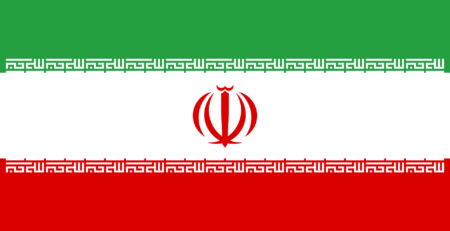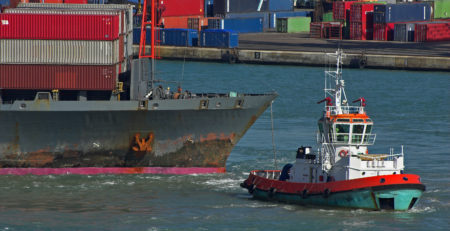The impact of the COVID-19 crisis on European economies and how this may redefine the concept of precarity
The global economic slowdown has shared centre stage with the immediate public health threat that the COVID-19 crisis presently poses. Spiralling unemployment, eye-watering government bailout packages, collapsing supply chains and consumer demand falling off a cliff have all but resigned the markets to a deep recession. Some commentators fail to see why the markets would return to positive figures before the end of the year. Many believe we are about to experience the deepest recession in living memory – now all but confirmed by the IMF’s predictions. As if this was not unprecedented enough, traditional bear market behaviour has been abandoned: for the first time ever equities sell-offs have been matched by a drop in bond yields. Cash redemptions are at an all time high; investment managers have been rendered speechless.
Evidently things are far from rosy. What seems equally clear now is that we are witnessing a paradigm shift in political economy. The coalescence of human security and the stability, or rather the obvious fragility, of the global economy will have far-reaching consequences. But there is one particular key concept popular with political economists that may well receive a redefinition: precarity.
Precarity has emerged as a popular term in scholarship since the onset of the twenty-first century, gaining traction with critics of neoliberalism due to the impact of globalised divisions of labour. It is understood to be a state in which there is a general lack of stable work or income. As the Fourth Industrial Revolution has gained pace, the “gig” economy has made precarity an all the more prescient object for analysis.
Yet scholars have too often focused on the notion of precarity beyond the advanced economies of the world, instead choosing to see how globalisation and neoliberal doctrine have impacted the lives of the labour force in the so-called global south. The present crisis is revealing how limited this view tends to be. A brief examination of the impact of COVID-19 on labour, industry and government in Europe illustrates this point.
The human health threat that COVID-19 has posed to the population of countries across the globe is more than apparent. Mismanagement of containment strategies have already shown how deadly the situation can be. In that regard the Trump Administration is winning first prize. But successful containment strategies have created an entirely different problem: rampant levels of unemployment.
The Institute for Fiscal Studies in the United Kingdom reported 950,000 first time application for Universal Credit Allowances only last week. A similar number were lost in Spain (834,000 in March alone); the French Labour Ministry has reported that those seeking partial unemployment support has now reached a record 5.8million people. That equates to one in four private sector workers in the country.
There could scarcely be a more stark example of the precarity of work in the modern economies of Europe. The International Labour Organisation has prescribed the usual remedy: welfare support and government-driven aggregate demand to create employment. Such a prescription is to miss the point – a realisation now slowly being made in Europe.
The “gig economy” as it has become known has structurally altered the composition of the modern labour force. As freelancers, many of those working in this environment do not pay the traditional social welfare contributions and the social security systems of European states have been slow to adapt to this reality. Many of the jobs that have been shed have been in this area of the economy; the world of zero-hours contracts and Uber-drivers. This have left large elements of the workforce ineligible for the emergency safety net mechanisms implemented in countries like the United Kingdom and the Netherlands.
For many scholars and journalists – the two sometimes intertwined in the case of Thomas Piketty – inequality is the buzzword. What the present crisis has demonstrated, however, is that precarity is the real issue. The extent to which the composition of the labour market has changed in line with the phenomenon of the gig economy has clearly caught governments off-guard. European governments are playing catch-up when it comes to reforming the social safety net for the rigours of modern employment in modern economies across the continent.
Turning to industry and commerce, we are witnessing one of the most dramatic supply shocks in living memory but here observers again omit the notion of precarity from their analysis. It is with good reason that we should be extending the concept from the employed to the employers, however. A striking contrast in industries but one that highlights this point are the present difficulties being faced by aviation and agriculture.
Airline operators have now been on incredibly tight margins of safety for some time. In the last quarter of 2019, the average net operating margin for airlines globally stood at 7.66%. It is hardly difficult to predict that a strong bout of volatility such as we are experiencing at present could prove calamitous – something we learned after 9/11 and the financial crisis in 2008. Even then, present circumstances are largely unprecedented.
With the closing of borders and a general collapse in demand brought on by the COVID-19 crisis, airlines have found themselves under siege. Budget operator EasyJet has been forced to ground its 330 aircraft across Europe and accept a £600million bailout package to cover the loss of income and the considerable costs of hangarage and parking in airports throughout the continent. Flybe, a company that was already in financial administration, found the COVID-19 crisis to be the final nail in its coffin. Even the intercontinental giants of the Middle East have been struck by the crisis. Qatar Airways have been forced to reduce the salaries of their workforce by 50% until demand returns.
Other extreme examples are abundant. Agriculture on the other hand has been struck at both supply and demand. The picture is somewhat product dependent. Dairy farmers are experiencing a notable downturn in part connected to the loss of demand from large cafe chains like Starbucks and Costa not requiring their previously relentless need for milk. UK dairy farmers have already reported the need to discard excess produce for want of buyers.
In seasonal agriculture farmers have been squeezed on both sides but for different reasons. Demand for strawberries, asparagus and the like have barely been diminished only now there is a chronic shortage of seasonal labour. Having relied upon the cheaper labour offered by workers from Eastern Europe, British farms in particular are now facing the prospect of fruit left on branches and in greenhouses for want of someone to pick and package it. Either way, the consequences are potentially disastrous and may well lead to the financial ruin of many previously successful enterprises.
Taken together, the turmoil being endured by aviation and agriculture have a common theme: travel. Both are heavily dependent on the need for Europeans to travel between countries and continents on a regular basis. There are many layers to a globalised economy – this is just one example of how the displacement of just one dimension of that phenomenon exposes precarity in supply and demand.
Lastly and at the centre of the COVID-19 crisis, governments have hardly faired any better than business or labour. The impact has been indiscriminate – both advanced and developing countries have to some extent found themselves besieged by what initially looked to be a relatively contained health crisis in China.
The potential exposure of Europe’s healthcare systems to a crisis such as this – had measures not been taken to restrict social interactions – readily revealed the alarming fragility of the infrastructure that underpins one of the cornerstones of the continent’s social market tradition. The consequence of an overwhelmed healthcare system in the pandemic scenario has played out in Italy and Spain, while their European partners – and much of Europe’s population – have only been able to look on in horror.
The expense incurred by closing much of the economies of Europe in order to contain the virus has in turn revealed a further chink in the armour of the European Union, once again highlighting the thin veil of stability that exists between its member states. The assault on European economies brought on by COVID-19 has produced myriad problems. The “Corona-Bond” debate is a case in point. Controversy and discord immediately ensued as it became apparent that northern member states, Germany and The Netherlands in particular, had no appetite for such a solution. To the beleaguered Mediterranean states, whose national balance sheets could scarcely sustain further debts, this has been a replay of the Eurozone crisis. The €430Bn rescue package that was agreed upon in cooperation with the European Central Bank notably omitted any mention of such a “Corona-Bond”. The message remains clear however: COVID-19 shows little sign of ending the fractious reality of politics within the EU.
A further complication for Europe has been the realisation that global supply chains have left the entire continent in a state of economic vulnerability. In this regard, Europe is hardly alone. The potential risks of offshoring all manner of manufacturing have long since been examined but COVID-19 has made it abundantly clear that the problem is far greater than it was thought to be.
The precarity of the situation would perhaps be less acute had the need for PPE (Personal Protection Equipment) in hospital not become desperate. Various member states are vying for supplies. The decision of the United States to reroute masks produced by 3M destined for Germany sparked a furious reaction in Berlin. Reports from London hospitals note the use of goggles donated by the hardware chain, B&Q. The crux of it all? The vast majority of these products – in many cases produced by European proprietors – are manufactured in Asia. That is not to say that it is in itself a problem. Global offshoring has been standard practice for many multinational enterprises now for decades. It has, however, awoken politicians – and anyone looking to order anything from Amazon – to the considerable downsides of global supply chains in times of crisis.
What does all this mean for Europe and her relationship with the global economy? Well, probably not a turn inwards towards isolationism anytime soon. It will require a wholesale reevaluation from governments, businesses and researchers regarding their intrepretations of risk and its mitigation at all levels. Precarity now applies to all of us, and the policies of Europe and the work of scholars must surely need to reflect that.












